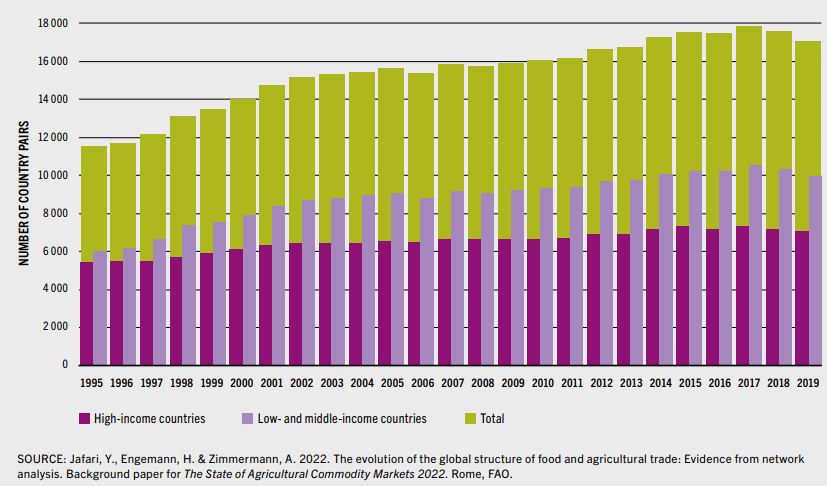FAO: number of trade linkages growing worldwide

The Food and Agriculture Organization of the United Nations (FAO) reported that the number of trade linkages, i.e. the number of trade flows between countries, increased from about 11,000 in 1995 to more than 17,000 by the end of the second decade of the millennium.
Linkages represent import or export flows between countries.
While linkages are measured at the country level for food and agriculture as a whole, the number of links indicates the number of countries with which a particular country trades.
Over time and taking advantage of the increasing openness of the global market, low- and middle-income countries increased their connectivity faster than high-income countries, accounting for about 60% of global trade links in 2019.
The evolution of food and agricultural trade links, 1995-2019
According to FAO, looking at the evolution of connectivity in terms of trade intensity-that is, in terms of the value of food and agricultural products traded through these trade links-provides additional insight into the global network.
Although many high-income countries and major emerging economies were already well connected to the global trade network since 1995, most countries in the world increased their trade intensity in 2019.
Eastern European and Central Asian countries experienced a sharp break in their trade network during and after the dissolution of the former Soviet Union.
After 1995, they re-established their trade links and in 2019 were among the growing group of most connected countries globally.
In sub-Saharan Africa, some countries remain less connected.
FAO
Between 1995 and 2007, countries «moved closer» to each other by establishing more direct trade linkages among themselves and increasing the value traded through these linkages.
During this period, high-income countries as well as low- and middle-income countries moved closer to other countries in the global network, thus shortening the pathways to these countries.
Despite this trend, low- and middle-income countries remain less connected to other countries in the global trade network than high-income countries.
This means that, on average, compared to high-income countries, they have established fewer trade linkages and the value of food and agricultural products traded through these linkages is lower.
![]()

